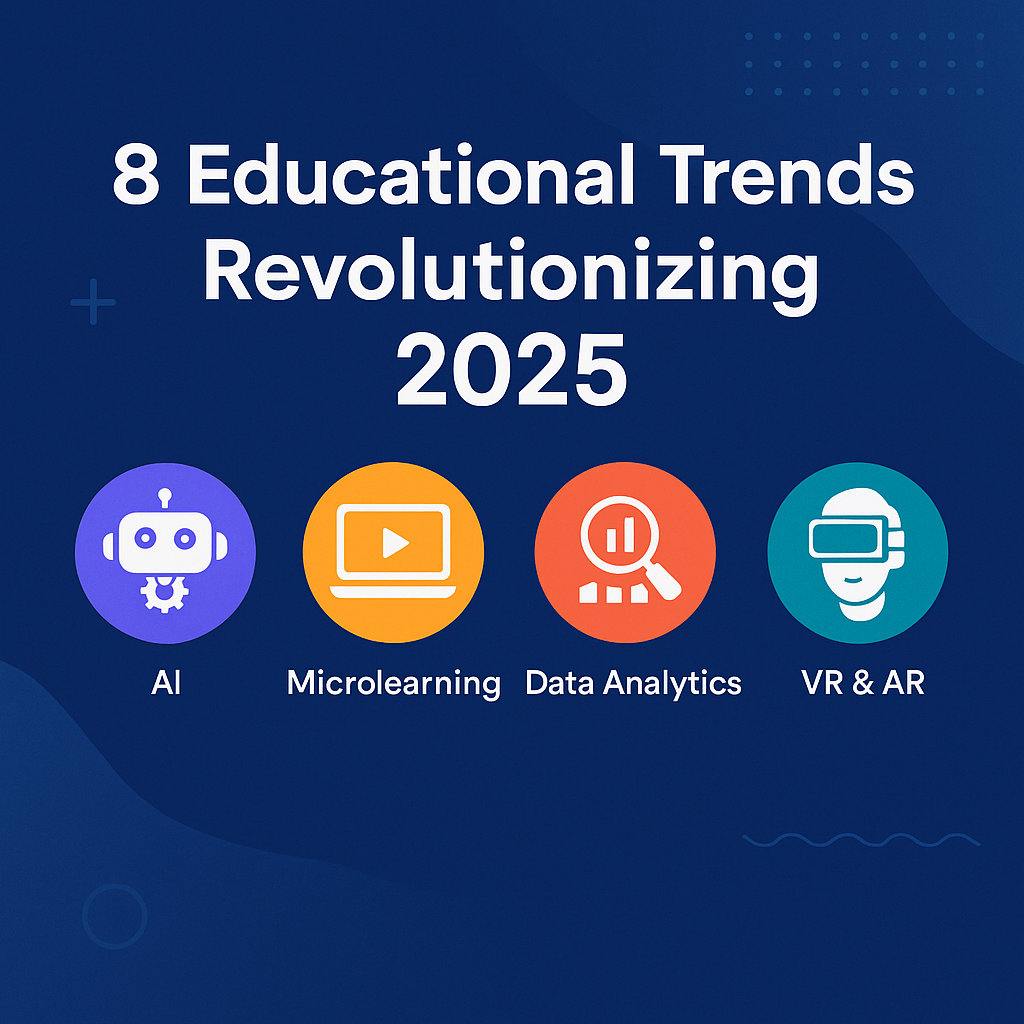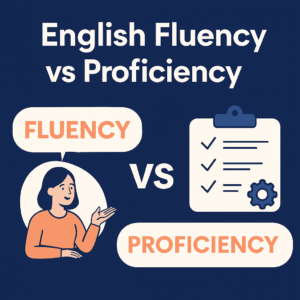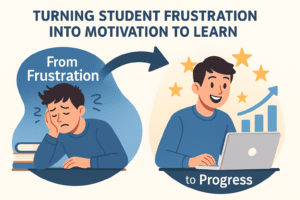Discover eight educational trends that will transform teaching by 2025, and learn how to use them to improve your English fluency.
Education has never been static. However, in 2025, transformations are occurring at an unprecedented rate—driven by new technologies, market demands, and the everyday challenges faced by teachers and institutions.
These educational trends in 2025 are not just fads; they’re concrete movements that show how teaching and learning can (and should) evolve.
From artificial intelligence to microlearning, these shifts are reshaping not only what is taught but how it’s learned.
Below, we’ll explore each of these eight educational trends, why they matter, and how they can impact—and enhance—the teaching of English and other subjects.
- AI and Personalized Learning: Tailored Instruction at Scale
- Microlearning: Shorter, Smarter Learning Experiences
- Data Analytics: Smarter Decisions with Real Evidence
- Competency-Based Learning: More Than Memorization
- Social and Emotional Learning (SEL): Educating the Whole Student
- Virtual and Augmented Reality: Real-World Immersion
- Hybrid Learning: The Best of Both Worlds
- Purpose-Driven EdTech: Choosing the Right Tools
- Conclusion
AI and Personalized Learning: Tailored Instruction at Scale
Artificial Intelligence is no longer a “future concept.” In 2025, AI is already being used to deliver personalized learning paths, adapt class pacing to meet student needs and identify areas for improvement in real-time.
These solutions go far beyond grammar drills. AI-powered platforms can:
- Recommend content based on each student’s level;
- Analyze pronunciation and speaking fluency in real-time (as FluencyFlow does);
- Support teachers with data-driven insights for more effective lesson planning.
The result? Higher engagement and stronger outcomes, as each learner progresses at their own pace with content that meets their needs.
Microlearning: Shorter, Smarter Learning Experiences
Another lasting trend in 2025 is microlearning—delivering short, objective, and practical content that’s easy to fit into busy schedules.
Picture a three-minute video explaining a concept or an interactive quiz to reinforce English vocabulary.
This approach enhances engagement, facilitates ongoing review, and sustains motivation—essential for achieving fluency without losing focus.
Data Analytics: Smarter Decisions with Real Evidence
Teaching alone is no longer enough—it’s time to measure for improvement. With data analytics, schools and companies gain a clearer picture of learner progress.
Rather than relying only on written tests or teacher intuition, educators now use concrete data.
For English instruction, tools like FluencyFlow assess real speech and generate objective reports to identify strengths and areas for improvement.
This transforms the teacher’s role into that of a mentor—guided by meaningful insights instead of notebook notes.
Competency-Based Learning: More Than Memorization
In 2025, competency-based learning has become a foundational principle. Schools are moving beyond content-heavy approaches to focus on practical skills and student attitudes—what learners can do with their knowledge and understanding.
In English instruction, this trend is reflected in activities such as:
- Collaborative tasks solving real-world problems;
- Simulated conversations focused on everyday situations;
- Assessments that prioritize fluency over grammar.
The goal is simple: empower learners to use English functionally—not just memorize rules.
Social and Emotional Learning (SEL): Educating the Whole Student
Teaching goes far beyond content. In 2025, Social and Emotional Learning (SEL) is one of the most critical educational trends.
SEL emphasizes skills like empathy, self-confidence, collaboration, and resilience.
These are game-changers when learning English. A student who feels safe, supported, and free to make mistakes advances much faster in their fluency.
That’s why many institutions are integrating Social-Emotional Learning (SEL) into their lessons—creating an environment where everyone can thrive and grow.
Virtual and Augmented Reality: Real-World Immersion
English practice used to be confined to the classroom. Now, with virtual (VR) and augmented reality (AR), the possibilities are nearly endless.
These technologies place students in realistic settings where they can practice vocabulary, listening, and speaking in immersive ways.
Imagine joining a virtual business meeting in English or exploring a foreign city without leaving home.
These experiences make learning more relevant and enjoyable while building confidence in using English in real-world settings.
Hybrid Learning: The Best of Both Worlds
The pandemic changed education forever—but also paved the way for more flexible models.
In 2025, hybrid learning is no longer an emergency solution; it has become a mainstream reality.
In-person and online classes complement each other, giving students autonomy and offering teachers tools to personalize instruction.
This flexibility expands access to English and encourages dynamic, participatory, and communicative lessons.
Purpose-Driven EdTech: Choosing the Right Tools
With numerous options available, selecting the right educational technology can be overwhelming.
But the golden rule is simple: prioritize tools that help students build real fluency and confidence—and that make life easier for teachers.
Solutions like FluencyFlow stand out by delivering concrete data on speaking development, helping educators and administrators make informed decisions.
Ultimately, technology should support learning, not hinder it. The right EdTech is not just innovative—it’s purposeful.
Conclusion
These 2025 educational trends show that education is more alive and innovative than ever.
From AI-powered learning paths to methods that put real speaking at the center, the future is already here—driven by data, empathy, and purpose.
If you’re looking to transform the way English or any subject is taught, take time to explore these trends.
And remember: fluency doesn’t come only from textbooks or long lectures—it grows through practical, engaging experiences that connect learners to the language and the world.
Want to see how these trends translate into real fluency data? Get to know FluencyFlow—and take your teaching to the next level.




